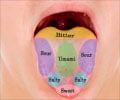The new study hopes to understand how neurons are receiving signals for taste and touch sensations.

‘Neural correlation is evident of the brain multitasking presenting use of limited brain cells to perform multiple functions for the body.’





“Taste is a component of flavor; it contributes sensations like saltiness and sweetness. When we're eating food, we get a lot of pleasure from taste and flavor, but taste is actually a sensory system that we really don't fully understand in terms of how it works in guiding eating behavior and also how it works in the brain,” Lemon said (1✔ ✔Trusted SourceTaste and Somatosensory Processing
Go to source).
This project will build on a discovery made by Lemon’s research group while studying a part of the brain where taste sensations can excite neurons in the midbrain region. Importantly, many other senses from various parts of the body are processed in the same neural location, with preliminary data suggesting some body senses can activate brain cells excited by tastes.
How Taste Works
“There is a part of the brain that takes in sensory information from basically almost all over the body, and taste is a part of this. We're wanting to understand, essentially, how taste is mapping into this part of the brain, along with all of these other body sensations as well, with the idea that if we can understand this it might actually tell us more about how taste works and how the taste system and other senses are organized, and why there appears to be neural overlap between them” he said.Past research suggests there is a pattern to the way these brain signals are being put together that Lemon believes to be reflecting the emotions elicited by different sensations.
“Studies in the new grant will combine molecular, genetic and neurophysiological testing to examine the organization of brain circuits that support the intersection of taste and touch sensations, and how these circuits work to influence behavior,” he said.
Throughout the five-year project, Lemon aims to better understand how and why these signals come together and further define basic organizational principles of the brain relevant to health and disease.
Advertisement
- Taste and Somatosensory Processing - (https://reporter.nih.gov/search/OHmpDQoMrUKNaf8jKfzLPA/project-details/10668808)














